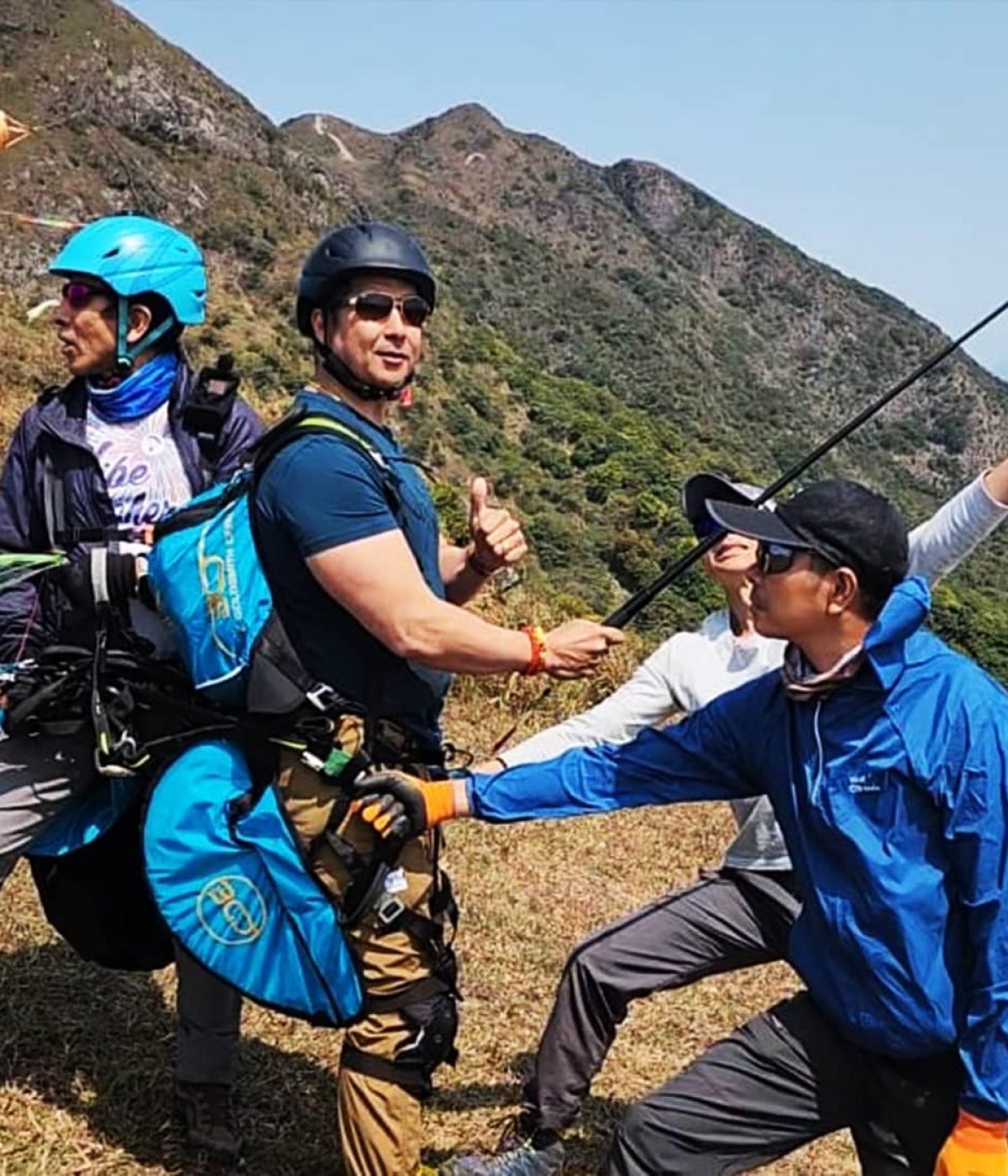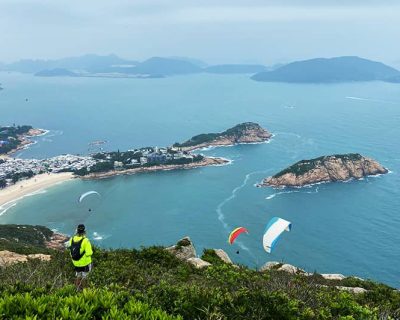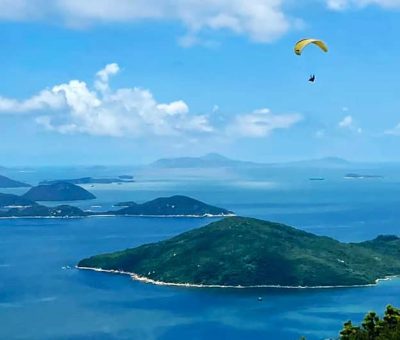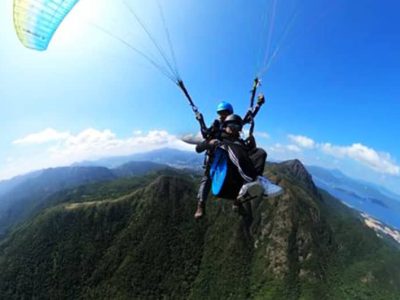Welcome to
Phoenix Paragliding Hong Kong
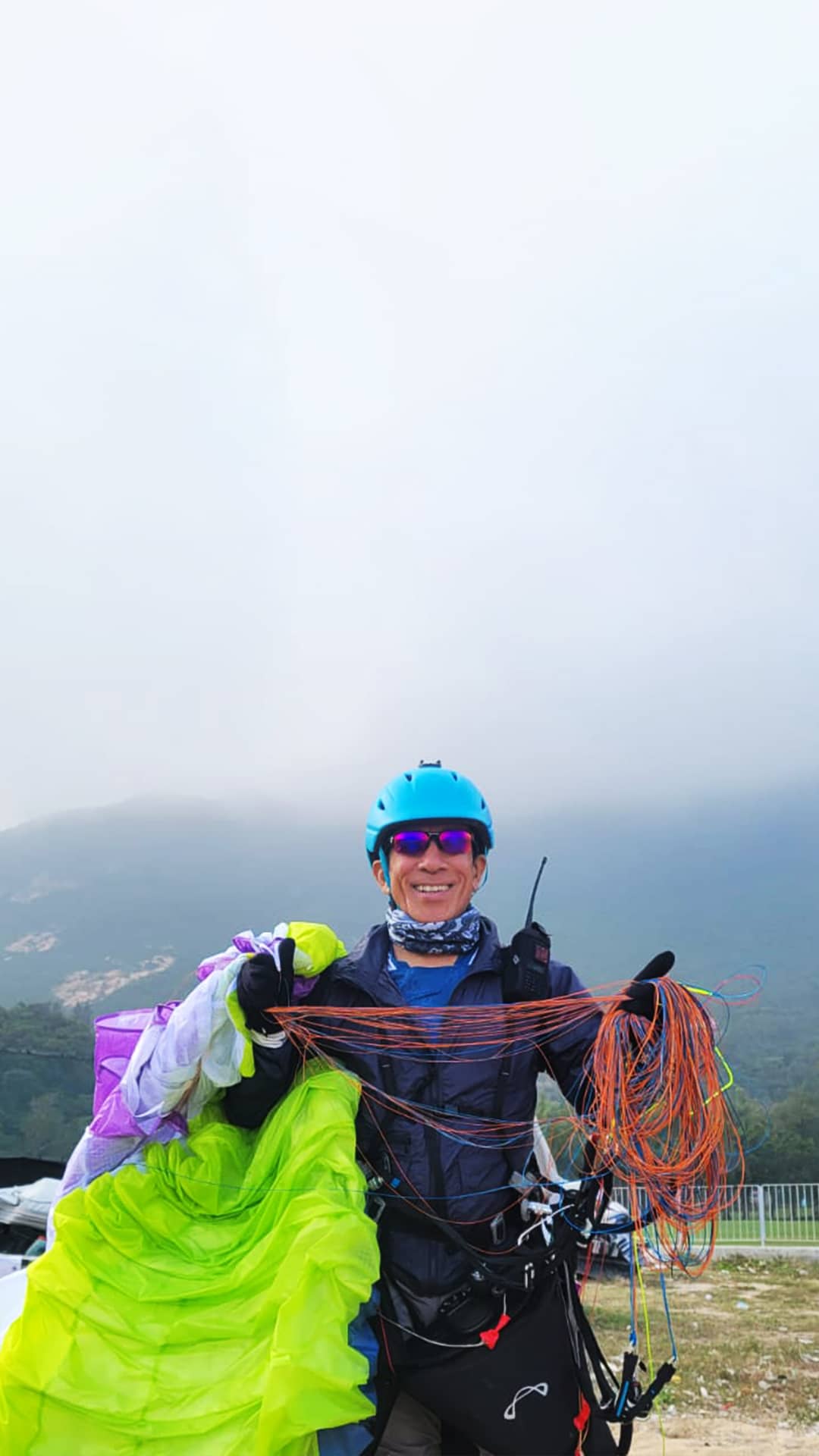
Paragliding is a year-round activity in Hong Kong, making it a wonderful place to get a taste of free flight, without the need to travel to some far flung land. Beautiful parkland scenery provides us with unforgettable hikes, while warm weather makes for pleasant flights.
Hong Kong’s spectacular outdoor scene offers amazing opportunities for paragliding, particularly unique due to the fact that we have easily accessible mountains just minutes away from the city center. You can have a morning coffee, and less than an hour later you can be looking down at the world below you!

Adventure Awaits
Enjoy Tandem
Flight with us
Hong Kong based paragliding with focus on safety and quality.
Legalized and approved by the HK Civil Aviation Department
Safety
In airport, safety is everything.
We spend hours analyzing weather maps and forecasts before we make our flight plans. Prior to every flight, we conduct windspeed checks and a radar scan to ensure we do not fly into rain or thunderstorms. In flight, we are always scanning the weather in case things are changing and we need to land.
We utilize latest and safest equipment, which is inspected and replaced on regular basis. All our gliders are equipped with emergency parachutes, and all our pilots are in radio contact with each other as well as ground crew who keep a watchful eye on the operation.
To ensure safe separation from airplanes, our flights are only conducted within air traffic zones assigned to paragliders by Civil Aviation Department.
Pre-flight Preparation
Our flight equipment is meticulously checked prior to every flight, and we run a strict protocol of safety checklists to make sure no items are skipped.
We assist you with donning your personal safety equipment such as helmets, knee pads, and elbow pads. Additional items such as wrist guards and gloves are available upon request.
From the first contact, to the moment your feet touch the ground again, we explain every step. We ask you to watch pre-flight briefing videos while still at home, but you will be given further highly detailed instructions once you arrive at the takeoff site. Careful briefings and practice sessions ensure you understand your role. This makes flights fun and enjoyable, while keeping everyone safe and sound!
Flight Experience
The flights are a mix of extreme adrenaline and zen. We call it “adrenalizen”. The moment you are clipped in and standing at the mountainside, you might be questioning what you got yourself into. Then you get the signal and we run forward. You might let out a bit of a scream, or not. Then the wing inflates, and you find yourself hanging from the straps, hundreds of metres above the jungle, with an enormous smile on your face! We ask that while you do enjoy the scenery, every so often you smile at the camera which is documenting the whole experience.
Depending on the wind conditions and your mood, we either do a gentle ride, enjoying the scenery, or we amp it up with a bit of aerobatic flight and high-G manoeuvres before coming to a soft landing.
Post-Flight
The exhilaration of the flight often leaves passengers in awe, filled with a sense of accomplishment and the thrill of having experienced something unique and adventurous.
Tandem paragliding provides an opportunity for practically anyone to experience the thrill of free-flight without extensive training or experience. It’s an unforgettable experience that often serves as an introduction to the world of paragliding, sparking a desire to learn more and perhaps even pilot a solo flight one day.
Paragliding Gear: Wing or Canopy, Harness, Reserve Parachute
The primary components of a paragliding setup include the wing or canopy, harness, and a reserve parachute.
- Wing or Canopy: The canopy, sometimes referred to as a wing, is the most recognizable part of a paraglider. Made from strong, lightweight materials, the canopy is designed to fill with air and create an aerodynamic shape (aerofoil) that generates lift. The wing’s design allows the pilot to control speed and direction by manipulating the trailing edge of the wing.
- Harness: The harness is where the pilot sits during flight. It’s attached to the wing by numerous lines that help maintain the shape of the wing and allow the pilot to control the flight. Most harnesses include pockets and compartments for instruments and other gear, and some have a built-in reserve parachute container.
- Reserve Parachute: Although incidents requiring a reserve parachute are rare in paragliding, safety-conscious pilots always fly with one. Reserve parachutes are designed to be deployed quickly in case of an emergency, such as a significant equipment failure or mid-air collision.
How Paragliding Works - Thermals, Ridge Lifts
Paragliding exploits the same principles of flight used by birds. Two key concepts that keep a paraglider aloft are thermals and ridge lifts.
- Thermals: A thermal is a column of rising air that is created when the sun heats the surface of the earth, warming the air above it. As the warm air rises. it creates an updraft. Paragliders seek out these thermals and circle within them to gain altitude. This concept is known as “thermalling.”
- Ridge Lifts: Ridge lift is created when wind encounters a ridge (or mountain) and is deflected upward. Paragliders can use this upward-moving air to stay aloft and travel along the ridge.
Understanding and exploiting these natural air movements is the key to extended flights, cross-country adventure, and even competitive paragliding. The best paragliding pilots are those who have a deep understanding of weather and air movement, and who can use this knowledge to their advantage in flight.
The emotional journey - Thrill, Serenity, Accomplishment
Paragliding is not just a physical experience; it is also a profound emotional journey that includes moments of thrill, serenity, and accomplishment.
- Thrill: The thrill begins even before the actual flight, during the preparation and anticipation phase. As the paraglider gets ready for takeoff, adrenaline starts to surge. The excitement reaches its peak during takeoff when the paraglider lifts off from the ground and starts to ascend. It’s an exhilarating feeling, something akin to breaking the bonds of gravity and soaring towards the sky.
- Serenity: Once aloft, the thrill gradually gives way to a sense of serenity. High above the ground, floating in the wide-open sky with the earth’s beauty spread out below, the paraglider experiences a unique calm. The sensation is often described as peaceful and liberating, offering a sense of tranquility that is hard to find elsewhere. It’s just the pilot, the vast sky, and the rhythm of the wind – a perfect escape from the hustle and bustle of everyday life
- Accomplishment: As the flight nears its end and the paraglider prepares for landing, a sense of accomplishment starts to build. Touching down safely brings e rush of satisfaction and achievement. Regardless of whether it’s a person’s first flight or their hundredth, every successful paragliding journey brings a feeling of victory and fulfillment. It’s not just about having conquered the sky; it’s also about having pushed personal boundaries and having lived an extraordinary adventure.
Paragliding offers a rich and varied emotional journey that resonates deeply with those who undertake it. It’s a unique blend of adrenaline, peace, and achievement that leaves an indelible imprint on the heart and mind, or’ individuals back time and again for another taste of the sky.

